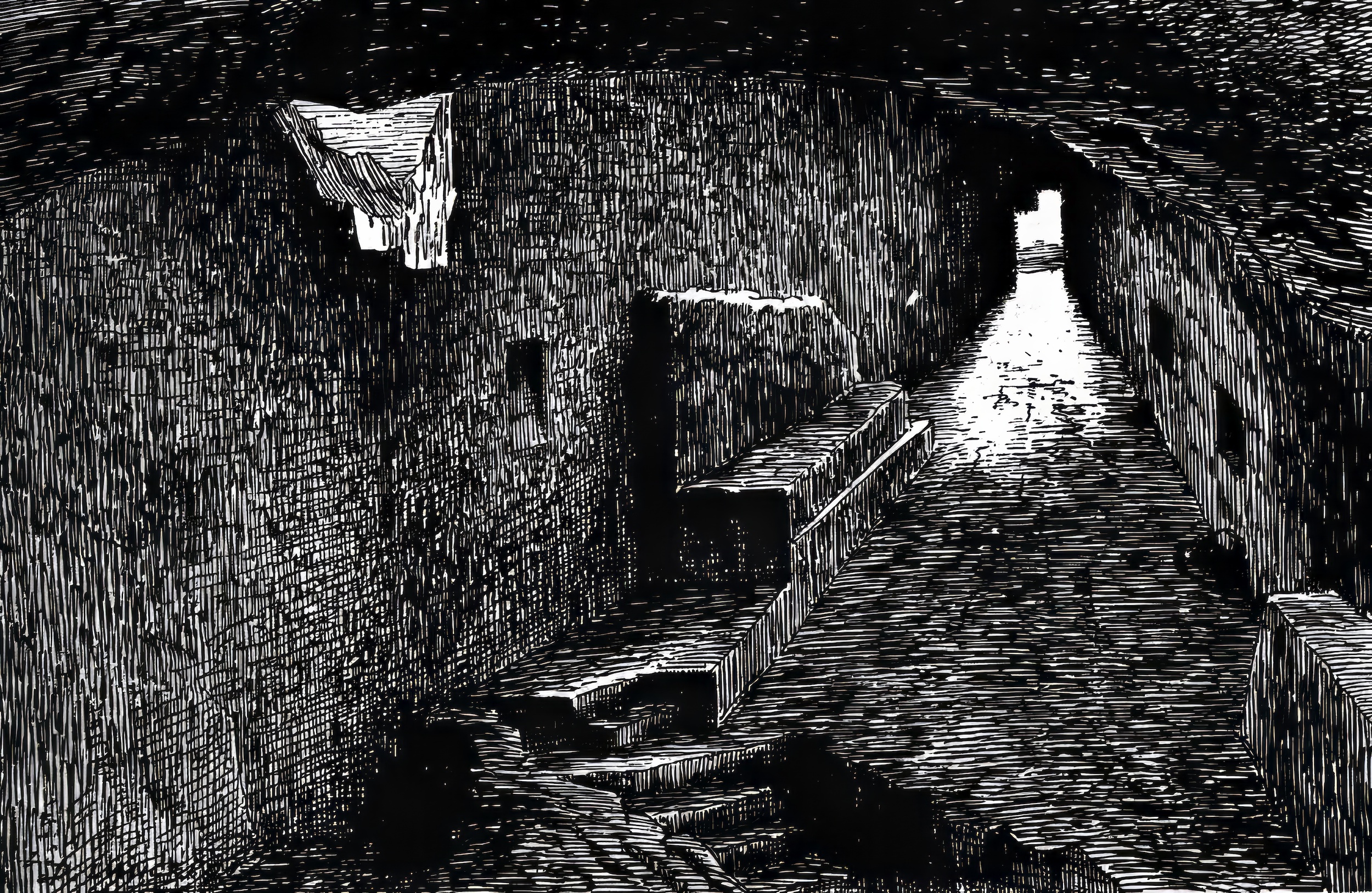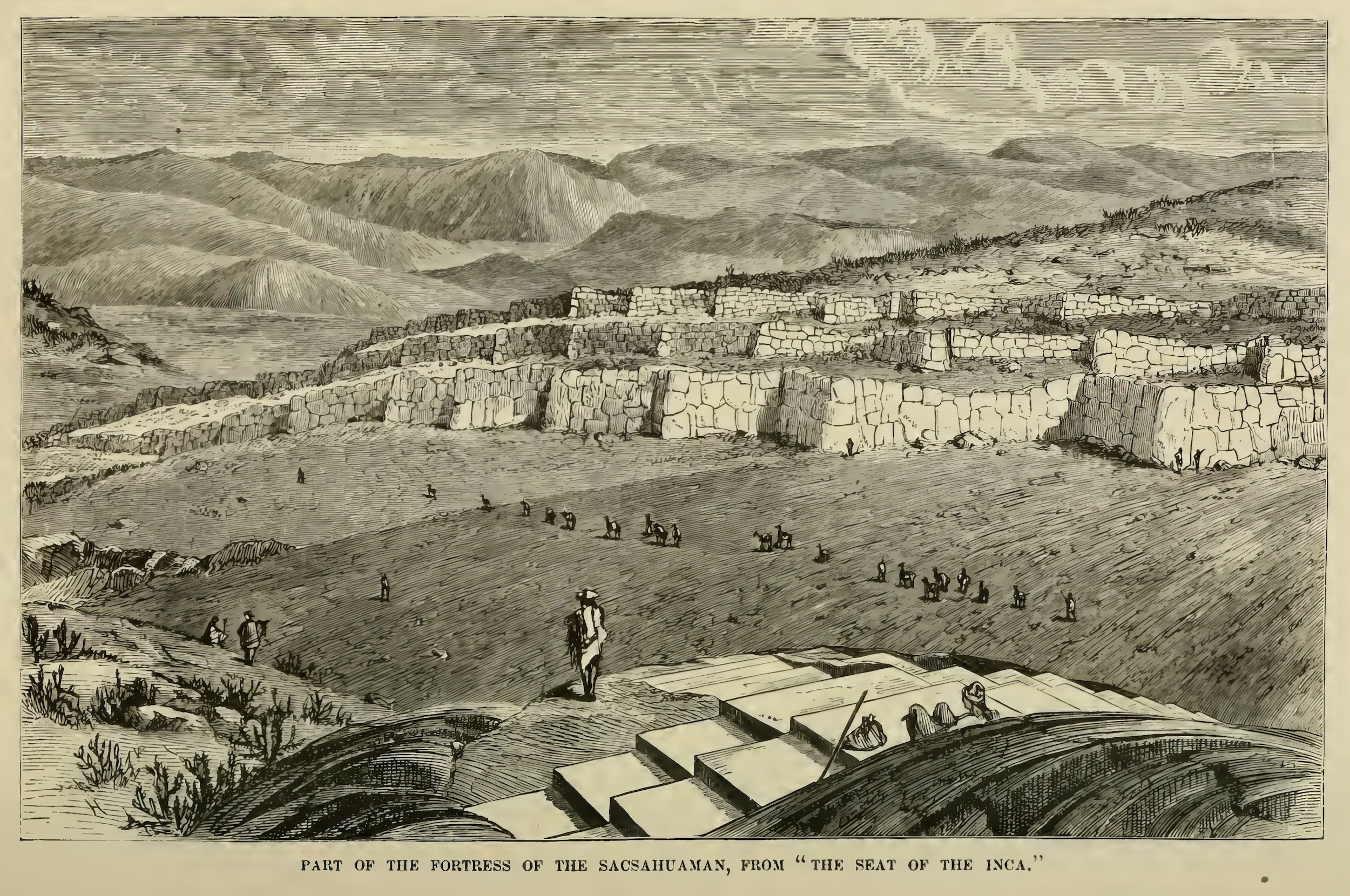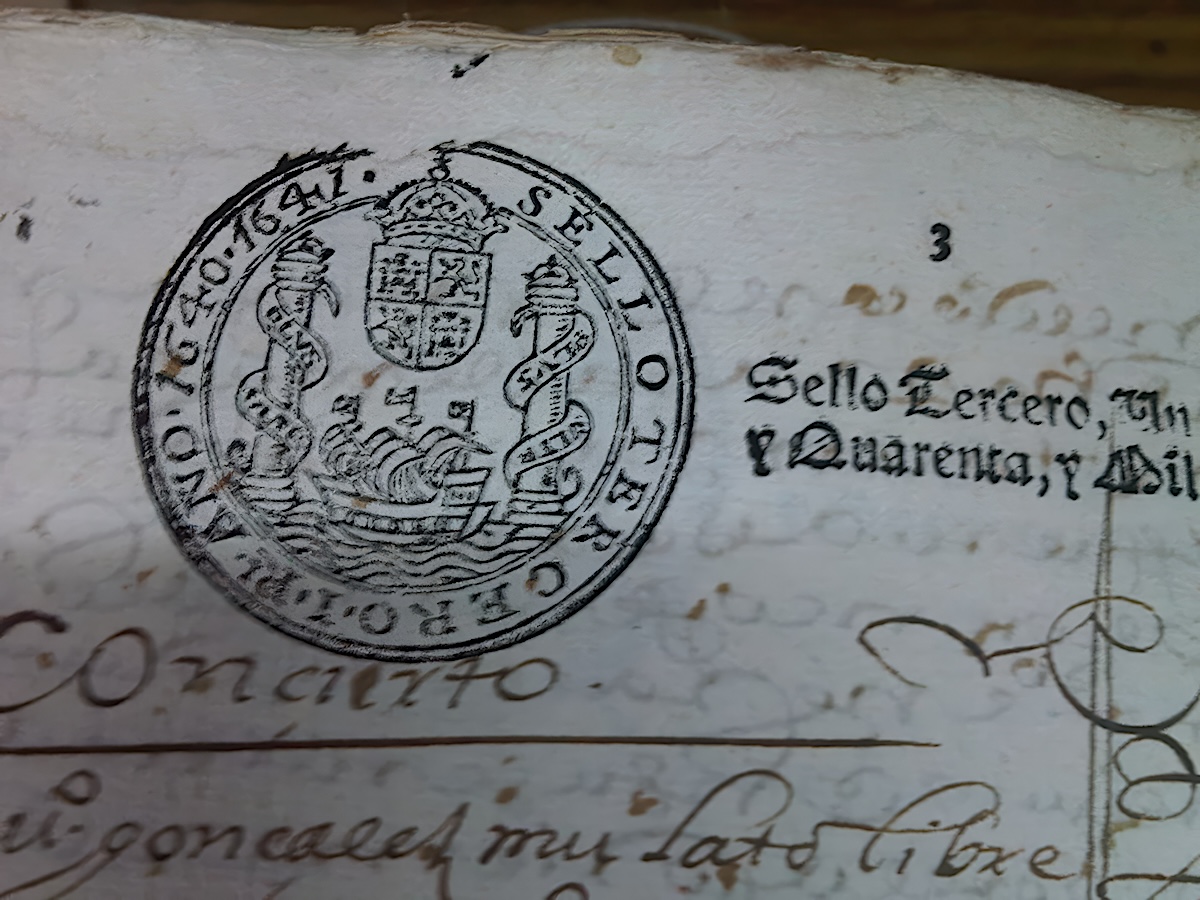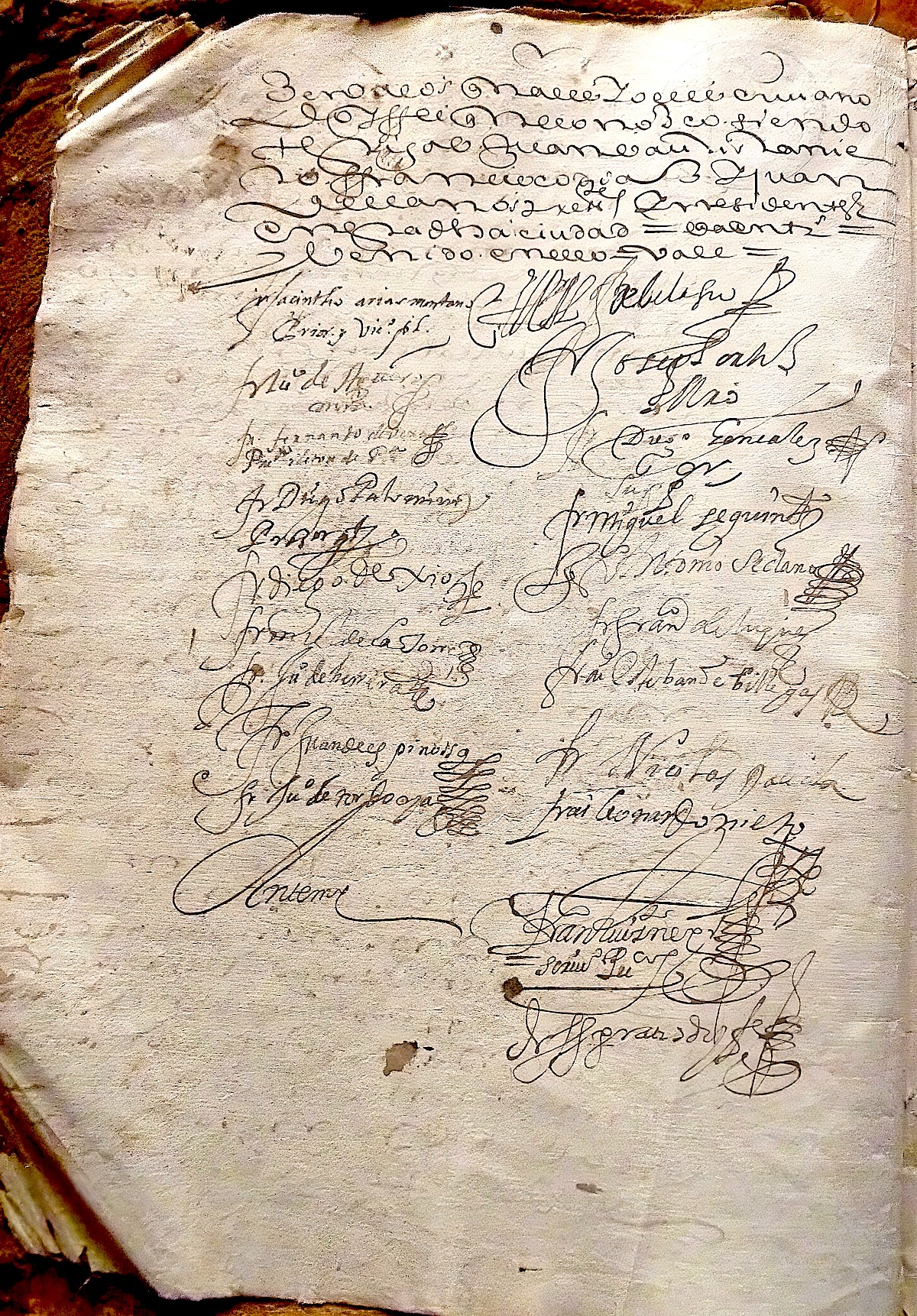“... because not only are there works made above the ground, such as the buildings in the city and fortress, whose manner of construction cannot be described, but underneath there is a great quantity, and all of it is solid stone, as well crafted as one can find in any work in Spain with all the tools available there, without any other, because they did not have more than stones, which it seems to me, and even to everyone, that a hundred Indians cannot carve one of those wide stones in a month.”
Martin de Morua Crónica (1590)
In a chronicle from 1590, written by the Mercedarian father Fray Martín de Murua, in chapter IX he tells us: “... of the great prince and captain Ausi Topa, son of the famous Topa Inga Yupanqui... This valiant captain Ausi Topa was the one who, by command of his father, made a path beneath the earth in the fortress of this city of Cusco to Curicancha, which was where they had the temple and oratory of the sun and the moon and all the other sacred places they worshipped, up to the entrance of this tunnel in the said fortress, where they called it 'la chingana,' although now it is all lost and finished because no one can figure out its course, except for the entrance, as upon entering some distance, they are lost and cannot find the way. Because neither in the said place of Curicancha is there any memory of it, and they say that the Inca ordered it to be closed so that no one could enter. It happened as mentioned." Morúa also mentions that the Inca Túpac Yupanqui built a temple within the fortress of Saqsaywaman: "... it was a very famous temple in the fortress of the city of Cusco, with countless doors and an entrance diabolically carved, which was a serpent's mouth that caused terror to those who looked at it... and through it, they entered and went beneath the earth to the Temple and House of the Sun called Curicancha, which doorway is now understood, as some old Indians say, to be in a cave called la Chingana, which means a place where things get lost."
AGNELIO OLIVA (1542-1572) Padre Jesuita Oliva S.J. Agnello
History of the kingdom and provinces of Peru of its Inca kings, discovery and conquest by the Spanish of the Crown of Castile with other singularities concerning history: first book of the original manuscript / by Agnello Oliva, S.J., written in 1598 and published after three centuries by Juan F. Pazos Varela and Luis Varela y Orbegoso. Lima: Printing and Bookstore of S. Pedro 1895, vol. 1 p. 59. Oliva tells us: “... Huayna Cápac dendowed with new, very sumptuous and large buildings, and to him is attributed the construction of the underground labyrinth called Chincana, from which labyrinth there were exits to the border roads, bridges, fortresses, and other buildings." "... the Inca, after having commanded the construction of grand and most sumptuous buildings in Cuzco, was one of them, which the Indians called Chincana, a labyrinth underground where few entered who managed to exit to the river, roads to the borders, and on them, fortifications, bridges, and other buildings were made, of which the memory endures."
FRAY ANTONIO DE LA CALANCHA (1584-1654) Corónica moralizada del Orden de San Agustín en el Perú (1638)
The Augustinian chronicler Calancha, when discussing the fortress of Saqsaywaman in Cusco, states that the Incas built an underground path of more than ten blocks, entirely carved, connecting said fortress to the Temple of the Sun: "... they called this underground passage 'La Chingana,' which is the same as saying, where one gets lost or hides or labyrinth."
FRAY ALONSO RAMOS GAVILÁN Y DÍAZ (1570-1639) The Virgin of Copacabana (1612)
Ramos Gavilán, a religious figure of the Order of Saint Augustine and a Criollo chronicler, renowned for his book on the Virgin of Copacabana, makes reference to the tunnels of Koricancha that connected through an underground path with the Solar Citadel of Saqsaywaman.
FERNANDO DE MONTESINOS (1593-1655) Chronicle of Fernando de Montesinos
Fernando de Montesinos, in recounting the change of dynasty from the Amautas to the Incas and how the latter assumed governance, delves into the story of Mama Ciuca. According to him, she creates a legend in which her son, Inca Roca, secretly takes her to the chinkana, a notable cave that descends upon Cusco and now bores through everything up to the Convent of Santo Domingo, which was once the House of the Sun. There, he adorns it with sheets of gold and precious stones that gleam in the sunlight. Summarizing this legend, it is said that Mama Ciuca wants to portray to the people that her son has been chosen by the Sun. To achieve this, she has him secretly taken through a tunnel between Koricancha and Saqsaywaman. This accomplishes her goal, and he is recognized as the king, the first of the Inca dynasty. Other chroniclers, such as José de Arriaga, recount a similar legend, asserting that the name of this young man was Manco Cápac.
CIEZA DE LEON (1520-1554) Chronicle of Peru (1553)
Cieza de León points out that: "...in many parts of the city, there are large buildings beneath the earth, and in the very entrails, today some slabs and pipes are found, and even jewels and pieces of gold from what they buried. Surely, there must be great treasures buried in the vicinity of this city, without the living knowing much about them."
HISTORIA GENERAL DE LOS JESUITAS (1600)
In the Historia General de los Jesuitas (1600, vol2, pag:32) t is commented on this chinkana: ... "the famous cave of Cusco, which the Indians call chinkana, was made very deep by the Inca Kings and cuts across the entire city in the middle, with its mouth or entrance in the fortress of Saqsaywaman. It descends from the heights on the side of the hill where the parish of San Cristóbal is located, and after many levels of depth, it comes out to what is now Santo Domingo, which, as mentioned earlier, was the famous temple of Koricancha. All the Indians from whom I have gathered information say that the Incas made this cave so costly and laborious so that in times of war, when the kings were in Saqsaywaman or the fortress with all their people and army, they could safely and without being heard, go to their Temple of the Sun and worship their idol Púnchau."
GARCILASO DE LA VEGA (1539-1616) Comentarios Reales de los Incas (Lisboa, 1609)
The chronicler Garcilaso de la Vega comments: "...a network of underground passages, as long as the towers themselves, were all connected. The system consisted of streets and avenues branching in all directions, all with identical doors. It was so complicated that not even the bravest dared to enter the labyrinth without a guiding thread or thick cord attached to the entrance door to be unwound as one progressed through the tunnels. ... as a child, I used to go to the fort with kids of my age, but we didn't dare to go very far, always staying in places where there was sunlight because we were very afraid of getting lost after hearing all the stories that the Indians told us about the place." Garcilaso continues, stating: "... some of the tunnels reached Cusco, three kilometers away, connecting Saqsaywaman with Koricancha and other buildings. Other tunnels penetrated into the very heart of the Andes, without knowing exactly where they led."
FELIPE GUAMAN POMA DE AYALA (1534-1615) Nueva Coronica y buen Gobierno (1600)
Guaman Poma was familiar with the works of the chroniclers who came before him, but on his own, he gathered firsthand information from the field and through oral accounts from his compatriots, collecting traditions and narratives related to the history of the Incas. Regarding the famous Chinkana Grande of Saqsaywaman, he states: "... as it had great fortresses called Sacsaguaman, and Pucamarca, Suchona Callis Pucyo, Chingana, the hole beneath the earth, reaches Santo Domingo, Curicancha of Cuzco. These were the great fortress and Pucara of the Inca, made for the entire kingdom" (Ayala 1615).
FRANCISCO RUEDA, JUAN HINOJOSA Y ANTONIO ORUÉ Year 1624 - Testimonials
In 1624, three men, Francisco Rueda, Juan Hinojosa and Antonio Orué, entered the Chinkana Grande from the Saqsaywaman side. Their attempt aroused enormous expectation in Cusco and many curious people accompanied them to the place. They tied themselves to the end of a long rope and left the other in the care of the witnesses. They disappeared inside and were never heard from again.
FERNANDO DE MONTESINOS Memorias antiguas, historiales, políticas de Perú (1638)
"... Tiahuanaco and Cuzco are connected by a gigantic underground road. The Incas are unaware of who built it. They also know nothing about the inhabitants of Tiahuanaco. In their opinion, it was built by a very ancient people who later withdrew into the depths of the Amazon jungle."
M. RIVERO Y J. TSCHUDI Antigüedades Peruanas (Viena, 1851)
"... these forts were in underground communication with each other, as well as with the royal palaces and the Temple of the Sun in the city. Such underground works were, according to tradition, very ingenious: they usually had four feet in width and one state in height, but in certain stretches, they narrowed, and there were pointed stones on the walls, so that only one man could pass through them, or their height was reduced so much that only crawling was possible. All this with the aim of being able to transfer the treasures of the city to the fortress and render an enemy pursuit impossible because behind each structure, there was a wide enough space to defend the passage against an entire army."
ERNST MIDDENDORF Perú (1893 - 1895)
Ernst Middendorf, published his book 'Peru' between 1893 and 1895, specifying that there would actually be two Chinkanas, one at the summit of Saqsaywaman in connection with the Temple of the Sun and the House of the Chosen Ones, and another at the feet of the Tired Stone (Chinkana Grande). Both would be of natural origin, caused by the cracking of the limestone rocks due to volcanic activity. The tunnels, internally, would not be vaulted but covered by slabs resting on small carvings in the walls: “... while there are no remains of walls on the Sacsahuaman hill, there is the entrance to a cave, about which all kinds of fables are told. They claim that it is the entrance to a labyrinth of underground galleries that in ancient times connected the Fortress with the Temple of the Sun and the house of the Chosen Virgins. Due to the danger of getting lost for those who dare to enter, the cave is called La Chingana. In reality, these caves are natural cracks, as they also exist in other limestone mountains, and here, they seem to be even more frequent due to volcanic action. Also, at the foot of the so-called Tired Stone, there is the entrance to a cave of this nature, also known by the name of Chingana”.
TWO STUDENTS 19th century
In the 18th century, two students entered through the Chinkana Grande of Saqsaywaman. One of them disappeared in the labyrinth of tunnels, but the other achieved his purpose. When, after ten days, they were considered missing, knocks behind an altarpiece (trapdoor) in the church of Santo Domingo drew the attention of those present in the temple. The altarpiece was removed, and behind it emerged, with lost eyes and torn hands, one of the students carrying a golden cob of corn that the monks carefully melted to make a crown for the virgin. It was instinct that had led him there through the tunnels and not reason, as he had lost it inside them. (Note: We have photographic evidence of the existence of the crowns)
CHARLES WIENER (1851-1913 Pérou et Bolivie (1880)
The explorer Charles Wiener, sent by the Government of France to carry out archaeological and ethnographic studies, published his monumental work Pérou et Bolivie in 1880, which collects his observations and findings. A lavish volume, with 1100 engravings, as well as numerous plans, where an extraordinary vision and documentary wealth is offered. In Saqsaywaman he made exclusive and important drawings in the Rodadero area showing in one of them a cyclopean gallery excavated in the rock that gives access to the Great Chinkana. A unique and invaluable testimony.
DRAWING CHARLES WIENER
Entrance gallery to the famous Chinkana Grande of Saqsaywaman sculpted in a block of granite in the Rodadero area.

E. G. SQUIER (1893-1895) A Journey through Inca Lands
Traveler E. George Squier, while exploring the Tiahuanaco region in the Kalasasaya area, uncovers an intriguing tradition. He is told that in this place, “there are large vaults of treasures beneath the great mound, and here begins an underground passage that leads to Cusco, more than 640 kilometers away.” Similar to what he describes about the Chinkanas of Saqsaywaman: “...at the very top of the Rock of Rodadero, there is a series of spacious seats, one above the other in front and laterally, like a staircase, intricately carved into the hard rock. They are called 'The Inca's Seat,' and tradition recounts that for three reigns, the Incas came here at intervals to observe the progress in the construction of the fortress. A part of a low limestone cliff, not far from Rodadero, is called 'La Chingana' or 'The Labyrinth,' and it well deserves that name. It is very cracked due to nature. Its fissures have been artificially enlarged, and new passages with low corridors, small rooms, niches, seats, etc., have been opened, forming a labyrinth in which one must be very careful not to become entangled and lost. The interior and more remote branches cannot be followed since General San Román, when he was prefect of Cuzco, had some of the passages sealed off as a result of the repetition of accidents, the latest of which happened to three boys who got lost and died of starvation in the twists and turns of La Chingana. There is a story circulating about two students who, many years ago, undertook the exploration of La Chingana and followed its passage until they found themselves beneath the Temple of the Sun, where they could clearly hear the singing of the mass in the church of Santo Domingo, which now occupies its place. All of which, in the wording with which committees conclude their reports, is respectfully submitted."
TEAM OF SPELEOLOGISTS Year 1923 - University of Lima
In the documentary "Documentary Series of Peru," an expedition conducted in 1923 by a team of speleologists collaborating with the University of San Marcos in Lima is described: “Accompanied by expert speleologists, they enter trapezoidal tunnels through an entrance in Saqsaywaman, taking measurements in underground crevices and advancing towards the coastline. After a few days, the expedition members who had stayed at the entrance of the tunnels lost contact with those who had ventured further inland, and there was no communication between them for twelve days. After this time, miraculously, one of the explorers appeared in very poor physical condition. The accounts he shared left witnesses astounded: he spoke of endless mazes and terrible obstacles, and his descriptions were of such a nature that his own colleagues decided to silence them to prevent people from thinking that the poor man had become insane. His companions never returned, and the case was filed away in anonymity.”
WILLIAM MONTGOMERY MCGOVERN Jungle Paths and Inca Ruins (1927)
In 1927, William Montgomery McGovern, a professor at the Museum of Natural History and Ethnology of South America, and a member of the Board of Oriental Studies in London, asserts in his book 'Jungle Paths and Inca Ruins' (page 320): "Near the fortress of Saqsaywaman, there are many strange caves leading deep into the Earth, where altars to the gods of the depths were carved into living rock, and many of the scattered bones found there are said to be from the sacrifices performed within. The exit of one of these caves, the Chinkana, was never found. It is said to have been connected by a massive underground passage to the Temple of the Sun in the heart of Cusco. It is firmly and rightly said that within this cave, a significant portion of the Inca emperors' gold was hidden, safeguarded to prevent it from falling into the hands of Spanish conquistadors. However, the cave is so vast, so intricate, with passages so convoluted that the secret was never unveiled. It is said that only one man ever made his way to the passage leading to the Temple of the Sun and emerged holding two gold bars in his hands. However, after wandering through the complex underground passages, he was so mentally disturbed that he passed away some time later. Since that occasion, many ventured into the caves and never returned. About two months before my arrival at the site, the disappearance of three prominent individuals within the caves prompted the prefect of Cusco to prohibit entry, preventing the discovery of the secrets and treasures of the Incas forever.”
LUIS A. PARDO & LUIS VELAZCO ARAGON Year 1956 - Central Library UNSAAC, code: 985.612, page 26, page 139
Using CCUSILLUCCJINQQUINAN as a reference point, heading north and taking the path from the hamlet of the PPUCJRU estate at a lower level, a series of rocky formations is found. Here, a long and narrow alley was opened, carved into the living rock with a curved trajectory, known as CHINKANA (where one gets lost). There is another one further ahead at the foot of the Inca's throne, located there with the same characteristics as the previous one. According to reliable reports, it is an underground passage that leads to the ancient CCORICANCHA, crossing the city from end to end. It seems to be a proven fact that there was an underground communication between SAQSAYWAMAN and the TEMPLE OF THE SUN, perhaps due to religious and war practices. Until recently, the entrance to this Chinkana was open, but a prefect or Departmental Authority ordered its closure.


